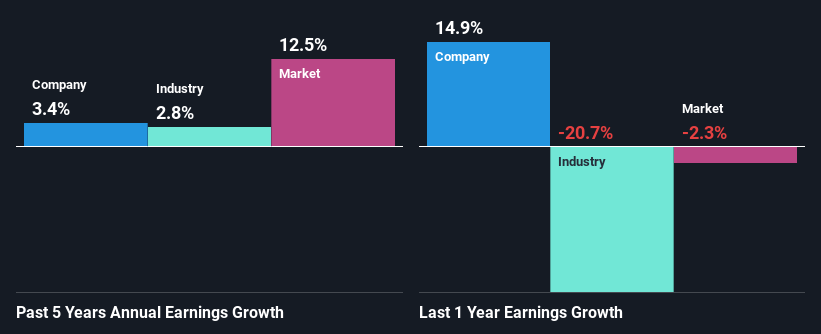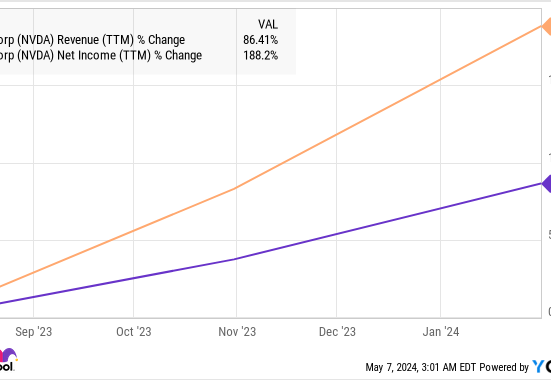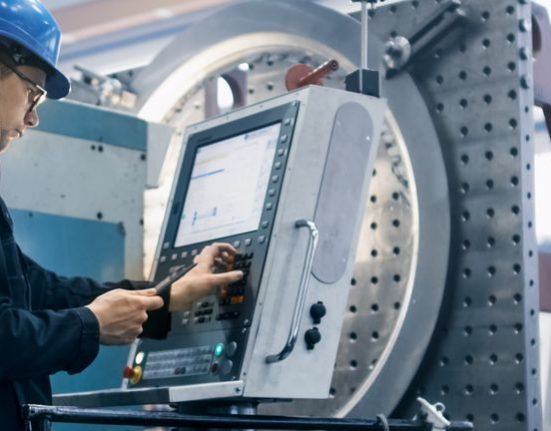Dinkelacker (BST:DWB) has had a great run on the share market with its stock up by a significant 12% over the last three months. Given the company’s impressive performance, we decided to study its financial indicators more closely as a company’s financial health over the long-term usually dictates market outcomes. In this article, we decided to focus on Dinkelacker’s ROE.
ROE or return on equity is a useful tool to assess how effectively a company can generate returns on the investment it received from its shareholders. In simpler terms, it measures the profitability of a company in relation to shareholder’s equity.
See our latest analysis for Dinkelacker
How To Calculate Return On Equity?
Return on equity can be calculated by using the formula:
Return on Equity = Net Profit (from continuing operations) ÷ Shareholders’ Equity
So, based on the above formula, the ROE for Dinkelacker is:
13% = €11m ÷ €81m (Based on the trailing twelve months to September 2023).
The ‘return’ is the yearly profit. One way to conceptualize this is that for each €1 of shareholders’ capital it has, the company made €0.13 in profit.
Why Is ROE Important For Earnings Growth?
So far, we’ve learned that ROE is a measure of a company’s profitability. Depending on how much of these profits the company reinvests or “retains”, and how effectively it does so, we are then able to assess a company’s earnings growth potential. Generally speaking, other things being equal, firms with a high return on equity and profit retention, have a higher growth rate than firms that don’t share these attributes.
Dinkelacker’s Earnings Growth And 13% ROE
At first glance, Dinkelacker seems to have a decent ROE. Especially when compared to the industry average of 4.2% the company’s ROE looks pretty impressive. Despite this, Dinkelacker’s five year net income growth was quite low averaging at only 3.4%. That’s a bit unexpected from a company which has such a high rate of return. Such a scenario is likely to take place when a company pays out a huge portion of its earnings as dividends, or is faced with competitive pressures.
Next, on comparing with the industry net income growth, we found that Dinkelacker’s growth is quite high when compared to the industry average growth of 2.8% in the same period, which is great to see.
The basis for attaching value to a company is, to a great extent, tied to its earnings growth. What investors need to determine next is if the expected earnings growth, or the lack of it, is already built into the share price. Doing so will help them establish if the stock’s future looks promising or ominous. If you’re wondering about Dinkelacker’s’s valuation, check out this gauge of its price-to-earnings ratio, as compared to its industry.
Is Dinkelacker Making Efficient Use Of Its Profits?
With a high three-year median payout ratio of 62% (or a retention ratio of 38%), most of Dinkelacker’s profits are being paid to shareholders. This definitely contributes to the low earnings growth seen by the company.
Additionally, Dinkelacker has paid dividends over a period of at least ten years, which means that the company’s management is determined to pay dividends even if it means little to no earnings growth.
Conclusion
On the whole, we feel that Dinkelacker’s performance has been quite good. In particular, its high ROE is quite noteworthy and also the probable explanation behind its considerable earnings growth. Yet, the company is retaining a small portion of its profits. Which means that the company has been able to grow its earnings in spite of it, so that’s not too bad. If the company continues to grow its earnings the way it has, that could have a positive impact on its share price given how earnings per share influence long-term share prices. Not to forget, share price outcomes are also dependent on the potential risks a company may face. So it is important for investors to be aware of the risks involved in the business. You can see the 1 risk we have identified for Dinkelacker by visiting our risks dashboard for free on our platform here.
Have feedback on this article? Concerned about the content? Get in touch with us directly. Alternatively, email editorial-team (at) simplywallst.com.
This article by Simply Wall St is general in nature. We provide commentary based on historical data and analyst forecasts only using an unbiased methodology and our articles are not intended to be financial advice. It does not constitute a recommendation to buy or sell any stock, and does not take account of your objectives, or your financial situation. We aim to bring you long-term focused analysis driven by fundamental data. Note that our analysis may not factor in the latest price-sensitive company announcements or qualitative material. Simply Wall St has no position in any stocks mentioned.








